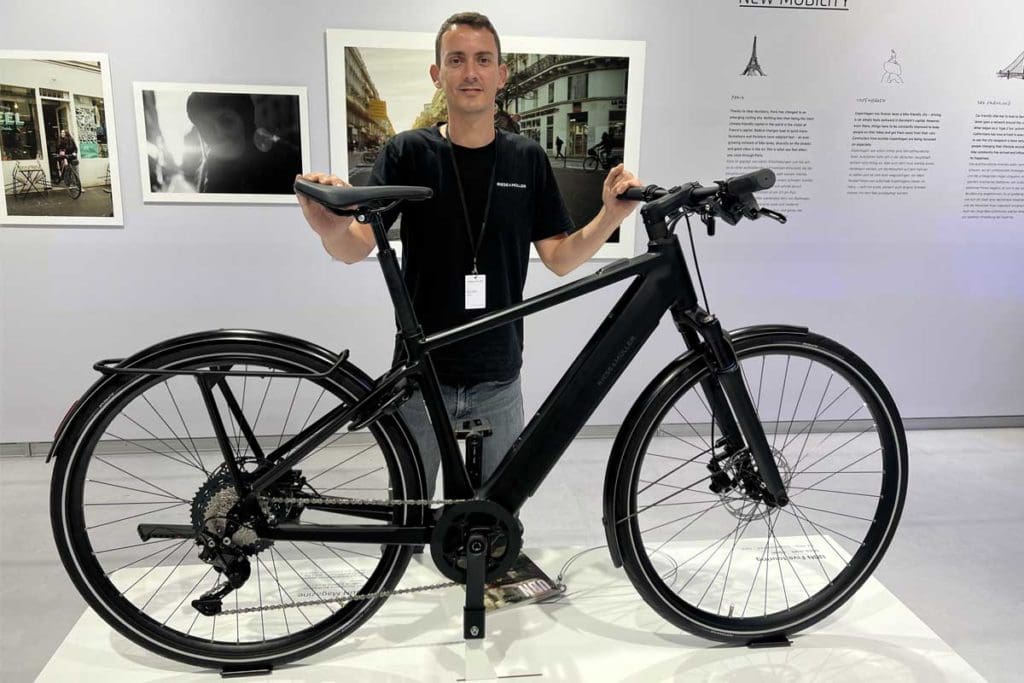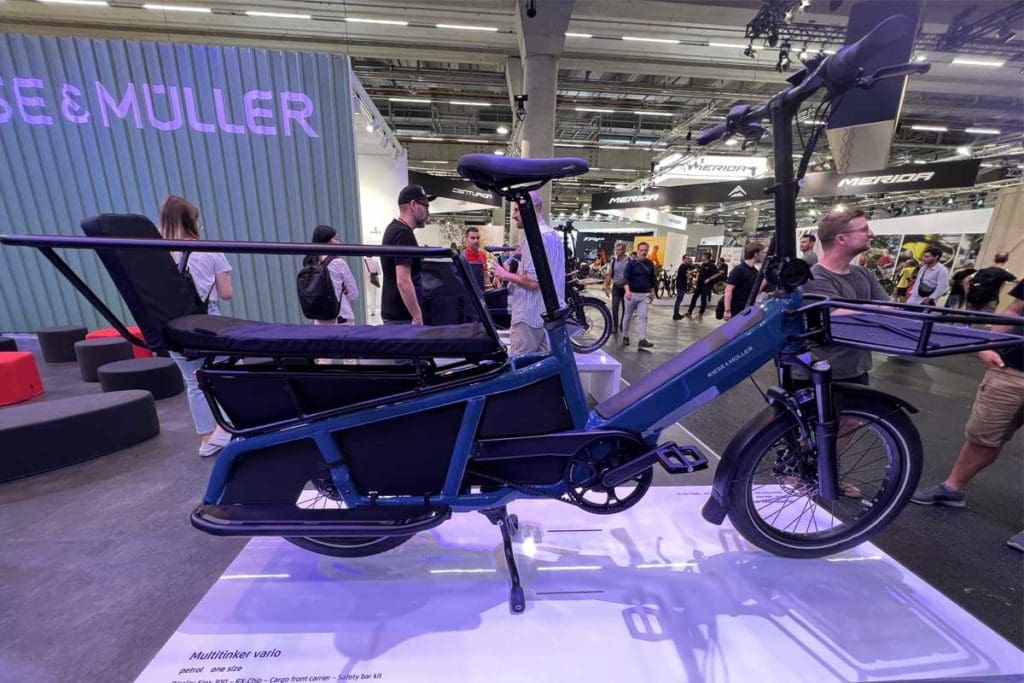Sometimes Perceptions Don’t Match Reality

Frankfurt, Germany
Many Australian bicycle industry members have probably not even heard of Riese & Müller. Although the brand has been available here for quite a few years, it’s only sold through about a dozen dealers across Australia and NZ who are supplied direct from R&M’s head office in Germany, rather than through a local importer/wholesaler.
R&M primarily makes bikes for transport, which is only a small part of our sport and leisure-orientated local bicycle market.
And R&M bikes are expensive. In Australian dollars, you’re looking at retail prices from $7,000 to $15,000, with $8,000 to $12,000 the most common price points. So how many bikes do you think this German e-bike manufacturer might sell worldwide each year? 1,000? 5,000? 10,000?
In fact, it has a projected estimate of more than 120,000 bikes for the current year. If you averaged retail sales at $10,000, that would equal $1.2 billion dollars in annual sales at retail value.
Benedikt Jagomast is the Riese & Muller’s International Sales Manager responsible for the Australian and NZ markets, among a range of other countries.
“It all started back in the early ’90s with our two founders, Markus Riese and Heiko Müller, who are both still CEOs today,” Benedikt explained. “In 1993, they first attended Eurobike with a folding bike, the Birdy.
“From there things didn’t go quickly, it’s almost 30 years. From early on, Markus and Heiko decided to have a strong focus on full-suspension bikes. We do offer hard tails, but in most cases, full suspension allows you to keep control in all cases such as bumpy roads. We even offer a full-suspension cargo bike, which not many brands do.”
Like everyone, R&M benefited from the Covid bike boom and also faced logistical challenges. Demand has settled down but Benedikt is upbeat about the future.
“We remain optimistic that the bicycle industry will keep growing,” he predicted, “Especially with e-bikes and also with huge potential in international development. Last year we sold around 105,000 bikes and our aim is to grow from there.
“We’re selling around 65% of the bikes in Germany alone. That tells us that we have a lot of opportunities in other countries.

“This year we’re expanding our range. We had some gaps in the cargo sector. While we’re convinced that the front-loading bikes offer most benefits for most use cases, we’re also aware that some people prefer to have a ‘Long John’ (rear loader) and we see that other brands are having good success with compact cargo bikes with 20-inch wheels, so we closed that gap with the Multitinker this year.
“In order to reach a younger target audience, we needed something more lightweight for inner city use so we came up with the Urban Line. We also wanted sustainable sourcing, so for the Urban Line, 90% of the parts are sourced within Europe.
“To achieve the low weight, we teamed up with Fazua for the Urban Line’s drive system.”
Fazua, which was recently bought by Porsche, makes smaller, lighter drive systems than Bosch, which previously was been R&M’s exclusive drive system supplier.
So how does R&M justify selling bikes that cost so much?
Benedikt explained: “Our aim is to get cars off the street and to achieve that, the bike that is to be used as a replacement for a car should be just as reliable as the car. To do that, you have to build a bike with high-quality components that you know are going to work on a day-to-day basis.
“For example, a high percentage of our bikes have belt drives which require less maintenance and last longer than chains. So you end up with a higher price, but people actually use the bikes. It doesn’t help consumers or the environment if the bike that’s purchased is hardly used then thrown away or replaced by something else.
“Our customers are typically not buying their first e-bike but maybe their second or third. We do want our bikes to last as long as possible. Sustainability is a big part of our company mission.”
